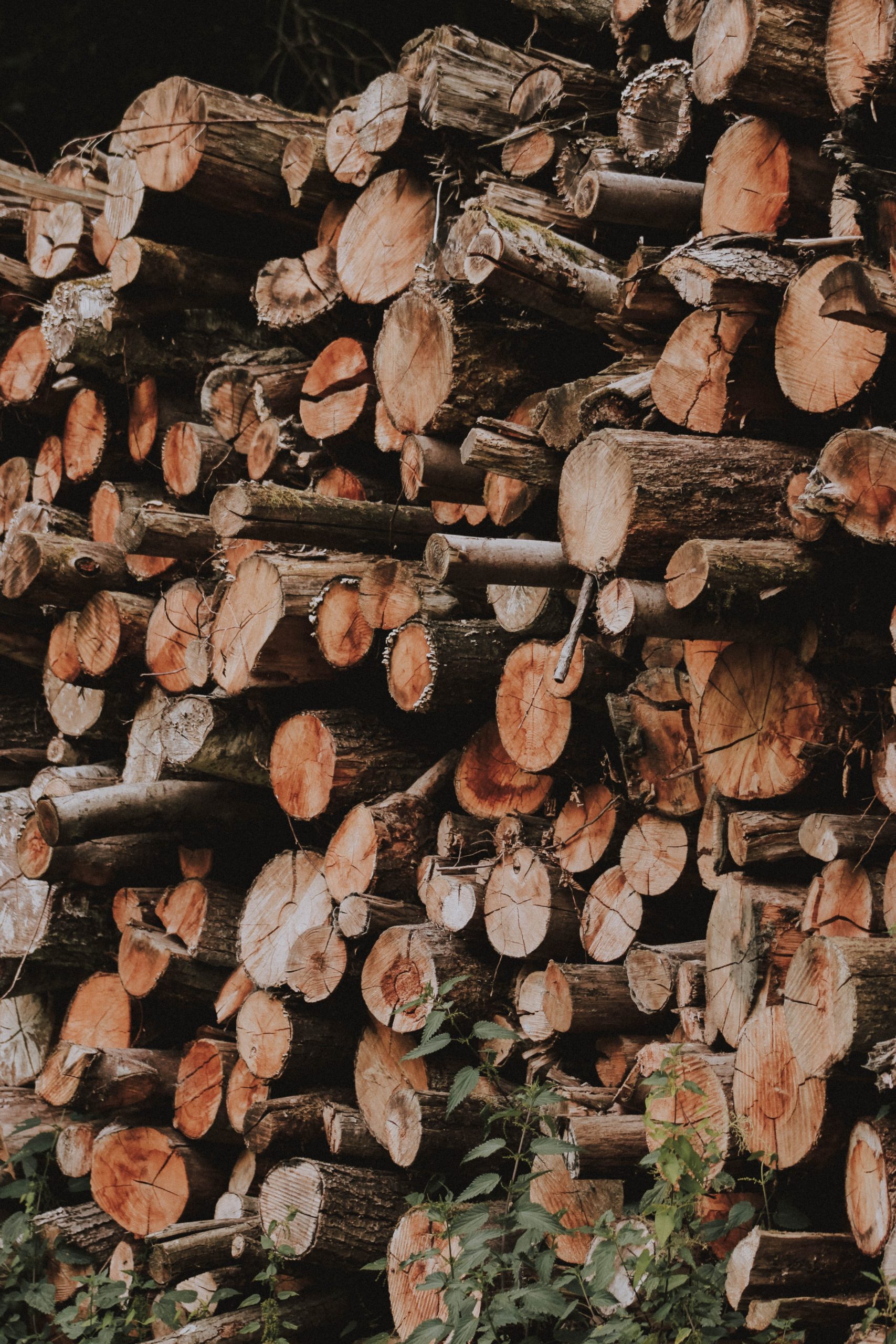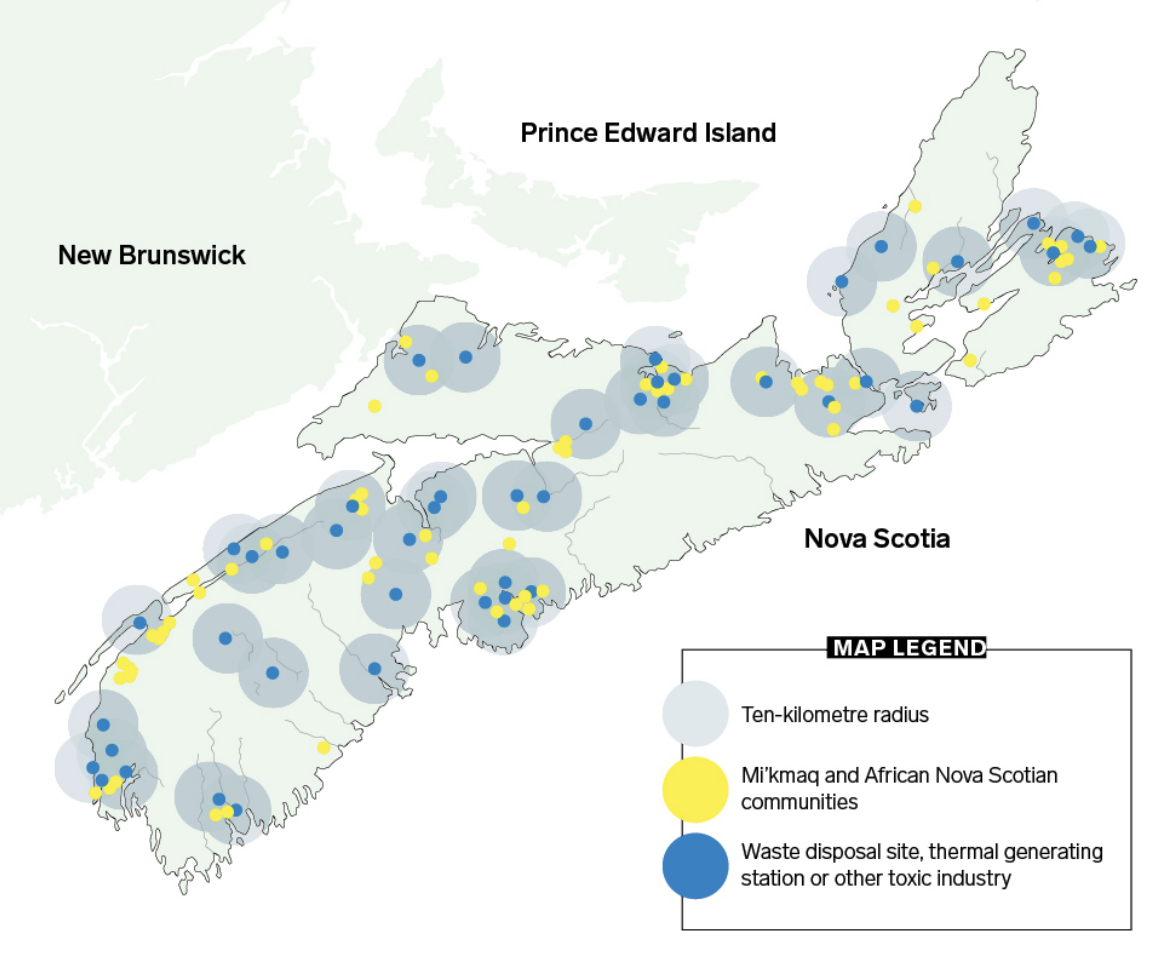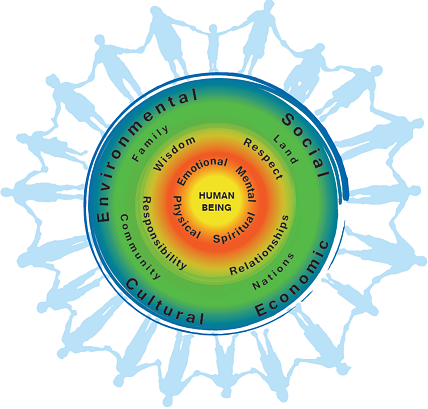Why We Must Re-engage
How do we Define Nature?
The English word ‘nature’ is borrowed from the Old French word nature, taken from the Latin, natura, meaning “course of things; natural character, constitution, quality; the universe.” In ancient times, this literally meant “birth”.9 As previously mentioned, how we define nature will inform our journey towards re-engagement. To a great degree, nature is a sociocultural construction, and one’s context greatly influences its expression.10 For this reason, it is difficult to provide a rigid working definition of nature for the context of this chapter. Rather, the aim is to explore how nature is understood from differing perspectives and teachings.
The following sections explore both a more traditionally Western approach of engaging with nature, as well as engagement as outlined by Indigenous teachings and scholarship. It is important to acknowledge that while a lot of generalizations are being made, how we engage with nature is far more nuanced and dependant on personal experience and perspective. The purpose of this section is to not polarize these processes of engagement but rather to explore how our values relating the the natural world have been shaped and why they may persist. Understanding and integrating these approaches may help us to navigate the inevitable changes to our ecosystems as a result of climate change.
Traditional Western Approach

With the historical influence of Christianity throughout the Western world, contrasting views of nature have emerged throughout the centuries. These range from valuing nature as God’s creation to the the beliefs of the Enlightenment era, when the advancement of scientific knowledge afforded humans the power to control nature according to their own desires.11,12 As colonies were established in North America, different empires issued royal charters under the direction of the ruling monarchs, thus embedding ideologies of land ownership in the beliefs of settlers on the continent.12
From there, the ideas of European thinkers such as John Locke were embraced by colonists. Locke proposed that humans have the divine right, as given by God, to use the land in ways that benefit them.13 He advocated for private accumulation of wealth and private ownership due to its perceived benefits of encouraging labour and the consequent production of commodities, thus allowing for the “fulfillment of God’s command to flourish”.13 This came to be one of the justifications endorsed by early colonists that would result in the colonization of land taken from the Indigenous peoples who had lived peacefully on it for millennia.13
In the 20th century, polarizing views of the human-nature relationship emerged. Anthropocentric views tie nature’s value to human existence and welfare.14 In contrast, biocentric views are oriented towards protecting nature and non-human organisms, with the perspective that nature has inherent value outside of its usefulness to humans.14 Biocentric views are also rooted in spirituality and connection with nature.14 While it can be argued that both views have a claim in advancing environmental efforts, overall, biocentrism consistently aims to protect the environment more than anthropocentrism.
However, as capitalist structures are deeply embedded in the Western world, anthropocentric views have frequently been favoured due to their alignment with capitalist values, as depicted in the Figure 1 continuum. This dominating capitalist value system is reflected in the development of harmful environmental practices like the construction of waste management facilities and sewage plants, which have negatively created additive (environmental pollution, illness) and withdrawal (raw materials, land) impacts on the land.15

Land Ownership and Commodification
The social constructionist perspective argues that land ownership is an artificial and socially constructed concept.16 Origins of this concept date back to colonial times when royal charters were established for the imperialistic gains of European empires based on the search for resource-rich land they could exploit and generate wealth from.16 These ideologies are not just artifacts of the past but are still present today. The influence of capitalist and neoliberalist ideologies in the Western world has embedded the commodification of land into our social norms and structures, with the key focus on generating capital.17,18 These ideologies also strongly favour the unregulated use of land and nature in a way that increases economic profit.14 These ideologies drive and promote ideals of dominion and ownership of land.
Colonial conceptions of borders and ownership are vastly different from Indigenous peoples’ who lived on the land and in harmony with nature long before settlers arrived from Europe. While some larger groups had more defined boundaries, the more common approach to ‘borders’ was defined by language, seasonal travel, hunting and fishing use, and landscape rather than the rigid, distinct lines one maps that we think of today.19,20 Borders were dynamic and overlapping, based on family groups and knowledge of the land rather than definite land boundaries under the control of one nation. While concepts of sovereignty were important to nations such as the Anishinaabeg in Ontario, there were still trans-national relationships based on mutual respect with other groups.19,21,22 Overall, boundaries were more commonly defined by identity and culture rather than based on colonial conceptions of ownership.
Blaine Grinder discusses losses to Indigenous communities as a result of colonization and its impact on land use (1:50)
Poisoning the Land: Environmental Racism
In 1982, Black activist Benjamin Chavis coined the term environmental racism. The term encompasses the hidden racial discrimination in environmental policymaking and targeting of communities of colour for constructing toxic pollutant-producing sites and the exclusion of POC from leadership and environmental movements.22
The philosophies that drive modern-day capitalism uphold systems of inequality to favour those in power, grounded in the colonial mindsets of white settlers. Those of lower socioeconomic status and other marginalized communities are left with worse outcomes as decisions concerning their well-being are frequently made without their consultation.23,24 As countries like Canada and the United States became more and more industrialized, the market demand for chemical plants, sewage treatment facilities, and other harmful industries grew. Those in power frequently decided to place these industries in marginalized communities, such as Black neighbourhoods, on Indigenous reserves and in low-income areas.15
Privatization and neoliberal reforms have historically reduced industry monitoring and reporting requirements. This severely impairs the ability of provincial ministries and local agencies to regulate and monitor environmental conditions, allowing for unregulated and uncontrolled damage and poisoning of the surrounding environment.15 Figure 2 depicts the proximity between toxic waste sites and communities of colour in Nova Scotia. This has resulted in alarming rates of cancer and other non-communicable diseases afflicting those living close to environmental toxins created by these facilities, primarily in African Nova Scotian and Mi’kmaw communities.25
“Environmental racism is based on this idea that we aren’t human enough to deserve a clean environment. Nobody cares if we get sick and die because we’re just Indigenous people. And industry and government are banking on that.”
– Molly Wickham (Supporting chief in the Cas Yikh House of the Gidimt’en Clan)26
It can be argued that environmental racism is fuelled by a commodification of nature, land, and natural ecosystems and the reproduction of a hierarchical system that continually oppresses those with the least power.27,28 Lack of respect for the land and those who reside on it perpetuates the detrimental impacts of environmental racism caused by waste facilities and chemical dumping. This, in turn, can lead to negative health effects and can contribute to persisting health disparities among marginalized populations.29 In some cases, these facilities have had lasting impacts on nearby soil and water sources, even after being shut down, which has impacted the ongoing challenges of accessibility to food security and clean drinking water for these communities.26

Indigenous Teachings on the Human-Nature Relationship
The Assembly of First Nations (AFN) is a national advocacy group representing First Nation citizens in Canada directed by Chiefs and chairs of the Elders, Women’s and Youth councils. The AFN writes what it means to honour the Earth:
“From the realms of the human world, the sky dwellers, the water beings, forest creatures and all other forms of life, the beautiful Mother Earth gives birth to, nurtures and sustains all life. Mother Earth provides us with our food and clean water sources. She bestows us with materials for our homes, clothes and tools. She provides all life with raw materials for our industry, ingenuity and progress. She is the basis of who we are as ‘real human beings’ that includes our languages, our cultures, our knowledge and wisdom to know how to conduct ourselves in a good way. If we listen from the place of connection to the Spirit That Lives in All Things, Mother Earth teaches what we need to know to take care of her and all her children. All are provided by our mother, the Earth. Indigenous peoples are caretakers of Mother Earth and realize and respect her gifts of water, air and fire. First Nations peoples have a special relationship with the earth and all living things in it. This relationship is based on a profound spiritual connection to Mother Earth that guided Indigenous peoples to practice reverence, humility and reciprocity. It is also based on the subsistence needs and values extending back thousands of years. Hunting, gathering, and fishing to secure food includes harvesting food for self, family, the elderly, widows, the community, and for ceremonial purposes.”30
First Nations groups have long understood the intimate connection between the health of the land and human health.30 The First Nations Perspective on Health and Wellness visual model (Figure 3), produced by the First Nation Health Authority (FNHA), presents a holistic vision of wellness.31 The second circle depicts health as a balance between physical, mental, emotional, social, and spiritual aspects. The governing values that uphold wellness include respect, wisdom, responsibility, and relationships, which are represented in the third ring. The fourth ring illustrates the people and spaces we are surrounded by: land, community, family, and Nations. The outer circle holds the major determinants of one’s health: environmental, social, cultural, and economic.
Ecological health is a critical component of the overall health of First Nations people. The land sustains holistic wellbeing, encompassing physical, mental, emotional, and spiritual dimensions. The awareness that the environment and Indigenous people’s health are intimately intertwined is key in protecting both from environmental threats. Indigenous people carry a responsibility to share their knowledge of the land and to care for the land, oceans, air, vegetation, food, and the all of nature.31
Leslie Marmon Silko, a Laguna Pueblo Indian author, writes that human life is only possible when we view our environmental surroundings as kin.33 It is part of Indigenous teachings that both we, as humans, and the natural world belong to an ecological family of common origins; one’s kin involves the ecosystem in its entirety.33 This “kincentric ecology” guides human-nature relationships and land management to ensure ecological wellness and sustainability.33 When humans fail to recognize their relationship with the place where they live, work, play, and learn, all suffer the consequences. For this reason, this chapter is titled ‘reconnecting with nature’ rather than ‘reconnecting to nature’, as the former implies that humans are inherently part of the natural ecosystem within which they reside.
Climate change disproportionally affects Indigenous communities and other vulnerable populations due to their close relationship with and dependence upon the land.34-37 Many Indigenous people consider themselves stewards of the land, positioning them as valuable leaders in addressing climate change and sharing knowledge of environmental conservation.37-39 While the commodification of land drives Western economic systems, the Seventh Generation Principle offers an alternative decision-making approach. This stewardship concept, originating with the Iroquois, urges the present generation to think about those living 140 years into the future. In other words, our present-day decisions should be to the benefit of those seven generations beyond us.40-41 This principle is further explored in Chapter 8: Sustainability.

Blaine Grinder discusses the importance of youth establishing a connection to their traditional lands (1:51)
Integrating Perspectives Through Two-Eyed Seeing
Etuaptmumk, the Mi’kmaq word meaning “the gift of multiple perspectives,” is referred to in English as ‘Two-Eyed Seeing’ and was introduced to the academic community in 2012 by Mi’kmaq Elders Albert and Murdena Marshall.42 It is a manner of “learning to see from one eye with the strengths of Indigenous knowledge and ways of knowing, and from the other eye with the strengths of Western knowledge and ways of knowing, for the benefit of all.”43 Two-Eyed Seeing advocates for the co-existence of knowledge, recognizing that knowledge and perspective are ever-evolving and seeks a more wholesome way of seeing the world and making decisions.44 It prioritizes strengthening relationships, co-learning, and adaptation.44 Using Two-Eyed Seeing as a starting point, one may gain a greater understanding of alternative ways of seeing the world and making decisions.
Evidence of climate change and global warming is pervasive, and we are already being forced to adapt and respond to this crisis. Western cultural practices, including our often unsustainable lifestyles and disrespect for our Earth, are embedded in the drivers of climate change. We must explore alternative ways of seeing the world in order to devise novel approaches that support adaptation strategies for rural communities to a changing environment. Applied here, Two-Eyed Seeing is the practice of merging collective Indigenous Knowledge with Western science on climate issues and our relationship with the natural world, thereby facilitating another perspective through listening to Indigenous and Western voices and creating space for meaningful collaboration and learning. Two-Eyed Seeing not only reinforces an interconnectedness between different peoples and perspectives but also between people and nature, highlighting humans’ involvement in a greater ecosystem that our health relies upon.44
Indigenous teachings, such as Two-Eyed Seeing, should be acknowledged and learned from to better understand how our natural environment influences our wellbeing
Sila Rogan shares how she navigates her Indigenous and Western perspectives (2:07)

